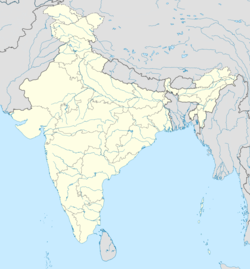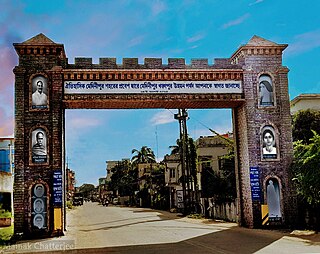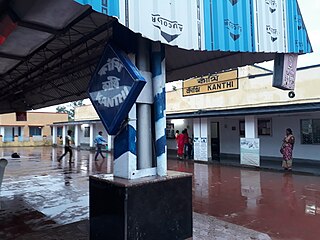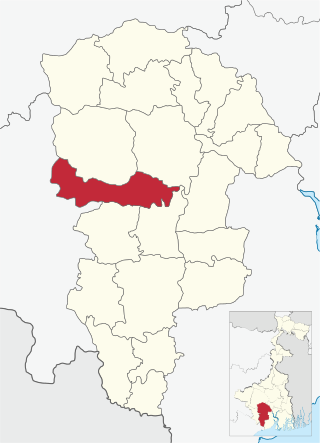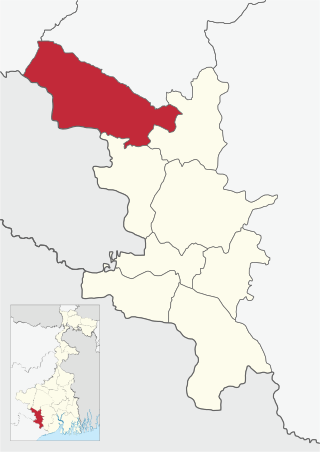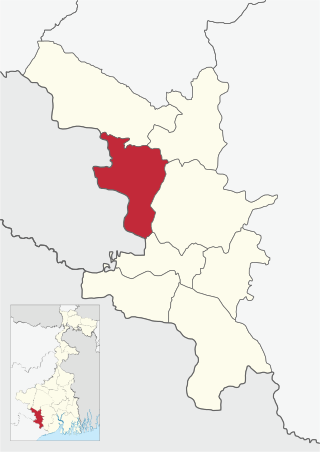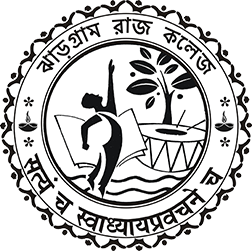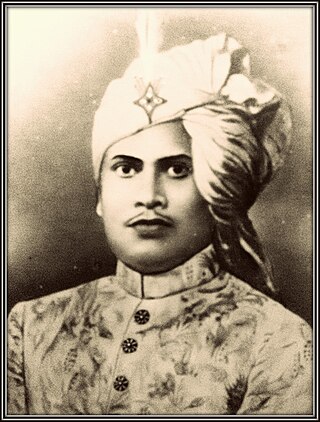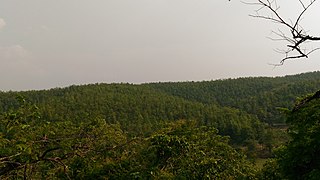History
Legend says that around 1592 CE, Man Singh of Amber had come to conquer Bengal on behest of Mughal Emperor Akbar from Rajputana (Rajasthan) to expand the Mughal Empire to Eastern India. He appointed one of his loyal officers in the army, Sarveshwar Singh, to defeat the local rulers of the region known as Junglekhand. This area is also mentioned in Ain-i-Akbari as Jhari-khanda, and it was populated by the Santhal, Munda, Bhumij, Kudmi Mahato and Lodha people groups. The area belonged to the Mal Raja.
The first fortress was supposed to have existed in Old Jhargram, but the ruins of the fortress are said to have gone underground due to some unknown reasons. The name of state capital, Jhargram, means a forest village which is surrounded by walls and canals. It was known as Ugal in the local language. Even today, the day after Durga Ashtami, the four corners (Ugals) are worshiped for the protection of the erstwhile kingdom. The man who was the hero or bull within the surrounded wall and canal were called Ugal Sanda. As such, the full name of the Raja of the State was known as Raja Sarveshwar Malla Ugal Sanda Deb, and the title has been continued up to Raja Narasingha Malla Ugal Sanda Deb.
During the Maratha invasion of Bengal between 1741 and 1751, the king of Jhargram Raja Man Govind Malla Dev joined his armed forces with the Raja of Bishnupur and the Nawab of Bengal to fight a war against them, and they were victorious. Jhargram remained an independent kingdom until 1767, when The East India Company, led by Robert Clive, came from Midnapore, via Radhanagar to capture the Jhargram fort. Raja Shyam Sundar Malla Dev the then king of Jhargram worked on to check the advances of the British by allying with the Raja of Dhalbhumgarh, he took part in the Chuar Rebellion to protect his independent status. He defeated Colonel Fergusson at Dudhkundi near Kharagpur in 1791 when the East India Company tried to enter Jhargram. Fergusson's forces, consisting of 100 Europeans, 300 cavalry, 1400 sepoys and 10 field pieces, was the standard size of the colonial armies. But the second time the joint forces were defeated at Radhanagar by the British army in 1793, ending thereby the last hurdle to the colonial conquest of Bengal, hence the treaty of Midnapore confirmed the surrender of Jhargram and Dhalbhum to the British. But soon the British Governor of Bengal endorsed his stature, the kingdom was then recognized as a Zamindari estate under the law of primogeniture, and the ruler was given the title of Raja. Jhargram fell twice into the Court of Wards, after the death of Raja Raghunath Malla Ugal Sanda Deb and Raja Chandi Charan Malla Ugal Sanda Deb, respectively; but was later released when the Raja Narasingha Malla Deb attained majority. In this connection, it may be mentioned that in 1944–45, the then Vice-Roy of India agreed to recognize Jhargram as a feudatory state; but at that time, the whole of India was going through turmoil and was moving towards independence. The Cabinet mission came to negotiate with congress, the Muslim League, and other parties. The proposal for the feudatory status of Jhargram Raj has put aside then. [5]
The rulers of Jhargram were benevolent and progressive, and they focused on the welfare of their subjects. Raja Raghunath Malla Deb studied FA in Scottish Church College, and was the first-degree holder in the district. In 1899, he had established the first primary school in his kingdom. Raja was also an avid wrestler and was known for miraculous physical strength. His wrestling instruments are still kept in the Palace and Calcutta Museum. Raja Sir Narasingha Malla Deb, the last titular king of Jhargram, is considered the father of modern Jhargram. Educated at Midnapore Collegiate School and Presidency College in Calcutta, he is conferred with OBE and KBE, granted the King George V Silver Jubilee Medal, served as a member of the Legislative Council of Bengal from 1947 to 1952 and 1952–57, and also a member of Parliament-Lok Sabha in Congress from 1957 to 1962. He commissioned the new palace in 1931, which is one of the finest example of Indo Saracenic architecture and spread over 23 acres of land. During World War II, Raja sahib constructed an airstrip in Dudhkundi for the United States Air Force, apart also provided the Allied forces with elephants, vehicles and other help.
Between 1922 and 1950 Prof. Debendra Mohan Battacharya was the administrator of Jhargram and that time is seen as a golden age. In those twenty-eight years, Jhargram developed into a township; and during this period, many educational institutions were established and developed. Kumud Kumari Institution (K.K.I), a premier institution of the sub-division, was founded in 1924. In 1925, an annual sports fund was created; which was to be used to encourage sports activities, and construct the football stadium and the Jhargram Club. Raja Narasingha Malla Deb established Jhargram Agricultural College, which was renamed Jhargram Raj College. He also established Vidyasagar Polytechnic, industrial training and gave funds to set up Sri Ramkrishna Saradapeeth Girls High School and Bharat Sevashram Sangha. The royal family established and assisted in the running of all primary institutions for at risk people in the Jhargram estate. At the consent of the Governor of Bengal, he established a hospital at Jhargram town in the name of his late father, Chandi Charan Charitable Hospital. Later on in every tehsil, a charitable hospital was established for primary treatment in the nearby villages. Raja established the Bani Bhaban, under the guidance of Lady Abala Bose, for rehabilitation of widows. He also donated land to the Roman Catholic Church of India and the Muslim community to build Nurrani Jama Masjid in Jhargram. In 1947, further land was acquired, and Jhargram Raj constructed buildings to develop a school, which was Rani Binode Manjuri Govt. Girls School; which is now one of the premier schools in Midnapore district.
Between 1928 and 1950, Sir Raja Narasingha Malla Deb donated to welfare causes and donated 10,000 bighas of land to poor farmers in 1947, making him the single largest land donor in West Bengal. [6]
In 2020, after a 9-year decline, Maoist insurgents returned to Jhargram and experienced a major resurgence, with some speculating an imminent Maoist resurgence in West Bengal. [7]
Culture
Jhargram is the golden treasury of tribal dances. Some of these tribal dances are on the verge of extinction. Chuang, Chang, Chhou, Dangrey, Jhumair, Panta, Ranpa, Saharul, Tusu & Bhadu etc. is not only a mere experience of some masterpiece of human creative art, but a fascinating adventure through essential dimensions of a civilization, its collective priorities, the skills of their implementation and the philosophies that inform them.
Besides the tribal culture, the regular Bengali festivals like Durga puja, Saraswati puja, Diwali and Kali pujas are well attended. Other common pujas in the worship of Shitala, Jagaddhatri, Holi, Ratha Yatra, Janmashtami, Bheema Puja, etc. also takes place.
A lot of fairs and carnivals take place in Jhargram. The famous fairs in Jhargram are Jungle Mahal Utsav, Jhargram Mela & Yuva Utsav, Rong Maati Manush, Shrabani Mela, Baishakhi Mela, Milan Mela. [11]

